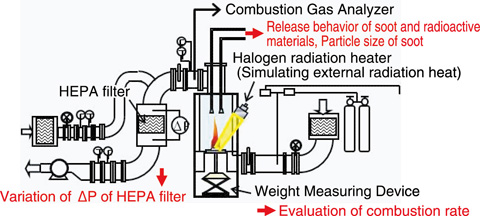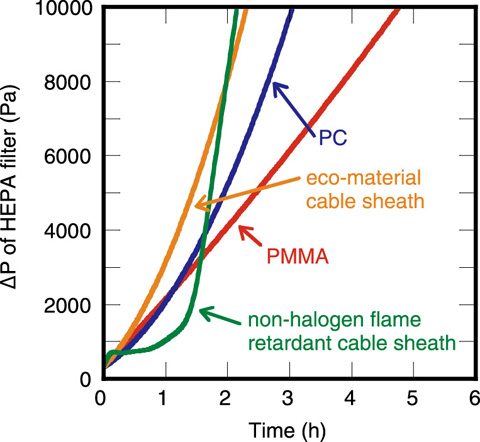
Fig.6-7 Outline of the Fire Source-term Evaluation Experimental Apparatus

Fig.6-8 Estimation of the progress of ⊿P increase using the test data
During a fire in a fuel cycle facility, soot and radioactive materials, which are produced from combustible materials, will be released to the outside of the facility after filtration using a high-efficiency particulate air (HEPA) filter. Therefore, increase in the differential pressure (⊿P) and breakage of the filter, which would result in the deterioration of the confinement capability, may be caused by clogging of the filter with soot. To quantitatively estimate the time until breakage for the HEPA filter, the Fire Source-term Evaluation Experimental Apparatus (FSEEA) (Fig.6-7) was designed and fabricated. Combustion tests using glove-box panel materials (polymethylmethacrylate (PMMA) and polycarbonate) and cable sheath materials (eco-materials and non-halogen flame retardant cables) were performed using the FSEEA. In the test, combustion property data, such as the combustion rate and soot generation ratio (ratio of released soot mass to combustion mass of the material), and clogging property data for the HEPA filter were measured under various experimental conditions, including variation of the flow rate and external radiation heat supplied to the materials.
From the test results, it was found that the properties were considerably different depending on the type of combustible materials. For example, PMMA had the largest combustion rate but the smallest soot generation ratio and caused the fastest rise in ⊿P per clogging mass of soot, because the particle size of the soot was the smallest. Moreover, the combustion of the non-halogen flame retardant cable sheath caused a gradual rise in ⊿P with a relatively small clogging mass of soot, but a rapid rise with increasing clogging mass when there was a relatively large mass of clogging soot.
The change in ⊿P was estimated by applying the test data, and the results are shown in Fig.6-8. The estimation was completed assuming that the combustion area for each material was a circle with a constant diameter of 50 cm and using test data that was subjected to an external radiant heat of 40 kW/m2, except for PMMA, for which non-radiant heat condition data was used. Although PMMA has the largest combustion rate, ⊿P rose most gradually after 1.5 h. On the other hand, ⊿P for combustion of the non-halogen flame retardant cable sheath rose rapidly with increasing mass of the clogging soot on the HEPA filter.
By applying the experimental data, we were then able to quantitatively estimate the time until breakage of the HEPA filter.
The reference report includes the experimental results which were carried out under a contract with Japan Nuclear Energy Safety Organization, in fiscal year 2009.